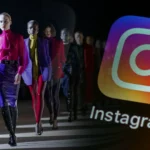Streetwear has become a dominant force in the fashion industry, with its influence extending beyond subcultures and into the mainstream. Once considered a niche trend, streetwear has now become a billion-dollar industry, with collaborations between streetwear brands and luxury fashion houses becoming increasingly common. In this article, we will explore the origins of streetwear, its rise to mainstream popularity, the characteristics of streetwear, the influence of celebrity culture, and the future of streetwear.
The Origins of Streetwear
Streetwear has its roots in subcultures such as skateboarding, hip-hop, and punk rock. Streetwear emerged in the 1970s as a way for these subcultures to express their unique style and identity. Early streetwear brands like Stussy and Supreme focused on graphic t-shirts and sweatshirts, which quickly became popular among these subcultures.
The Rise of Streetwear
In the 1990s, streetwear began to cross over into mainstream culture, with brands like Nike and Adidas adopting elements of streetwear into their designs. This crossover led to the rise of streetwear as a mainstream fashion trend, with streetwear brands like Supreme and BAPE becoming household names. Streetwear has now become a billion-dollar industry, with collaborations between streetwear brands and luxury fashion houses becoming increasingly common.
The Characteristics of Streetwear
Streetwear is characterized by its fusion of elements from sportswear, hip-hop, and high fashion. It often incorporates bold graphics, logos, and typography, as well as elements like hoodies, track pants, and sneakers. Streetwear also embraces experimentation and innovation, often pushing boundaries with unconventional materials and designs.
The Role of Celebrity Culture in Streetwear
Celebrity culture has played a significant role in the rise of streetwear, with many celebrities becoming synonymous with particular streetwear brands or styles. Kanye West, for example, has collaborated with Adidas on his Yeezy line, while Travis Scott has collaborated with Nike on his Air Jordan sneakers. These collaborations have helped to popularize streetwear among a wider audience, with fans looking to emulate the style of their favorite celebrities.
The Future of Streetwear
The future of streetwear is likely to be shaped by sustainability and social consciousness. Many streetwear brands are now incorporating sustainable and ethical practices into their designs, using recycled materials and fair trade labor. Additionally, streetwear is likely to continue to evolve, incorporating new materials and technologies into its designs, and continuing to push boundaries with its unconventional designs.
Conclusion
In conclusion, streetwear has come a long way from its origins in subcultures to become a dominant force in the fashion industry. Streetwear is characterized by its fusion of elements from sportswear, hip-hop, and high fashion, and is likely to continue to evolve and innovate in the years to come. As consumers, we can support sustainable and ethical streetwear brands and appreciate the cultural significance of this influential fashion trend.





